How to Onboard Remote Employees More Efficiently
As more companies switch to remote work, employers need to embrace the best onboarding practices to enhance new hires’ experience. Alignment involves updating various tools and processes to ensure seamless onboarding. Additionally, organizations are working tirelessly to leverage productivity hacks for remote teams.
Onboarding new employees remotely change the entire experience for both sides. Hence, the company’s approach to onboarding new hires makes a significant difference. A recent Price Waterhouse Coopers (PwC) survey in the US revealed that more than 30 percent of managers found coaching and onboarding new employees more challenging since that pandemic started.
This reality compels companies to adopt viable policies and approaches to resolve remote onboarding challenges. Resolving these issues is critical, given that the remote work trend will continue into the foreseeable future.
On the other hand, streamlining the remote onboarding process comes with significant benefits. These advantages include reducing training or coaching time and increased retention rates. New hires are more likely to stay on the job if the onboarding process helps them understand roles and responsibilities. Well-planned remote onboarding enables new team members to build a connection with colleagues.

Remote Onboarding Best Practices
Onboarding remote employees involve a relatively different process than the traditional procedure. When handled appropriately, the virtual process helps new employees feel a sense of belonging. Thus, schedule several virtual meetings to ensure effective communication. Interactive seminars and training courses help familiarize themselves with organizational processes.
Here are the best practices to onboard remote workers more effectively.
Invest in the Right Technology
The first step to ensuring a smooth onboarding process is to invest in the right technologies, such as Microsoft Teams and Zoom. These tools provide a reliable and secure connection when conducting training and interactive seminars. They provide chat and video meeting functionality to suit your organization’s needs. However, you should ensure that the new hires know how to use these communication tools.
Set Onboarding Goals
Unlike in-person onboarding processes, virtual introductions require more than just a warm welcome. You need to create a comprehensive list of objectives and procedures to enhance the new employee’s experience. Onboarding virtually may make some individuals feel uncomfortable asking questions. Thus, share the onboarding plan before the scheduled video call. In doing so, you ensure that the new team member knows what to expect.
One of the best ways to prepare for the sessions is to compile a detailed checklist of tasks and objectives. For instance, you can plan to complete human resources paperwork, set up Microsoft Teams accounts, and liaise with relevant stakeholders by the end of day one. You can also target to conduct security training and help the new employee get a feel of various tools by the end of the first week.
Host Virtual Introductions
Hosting a meeting between new hires and the rest of the team helps new members feel welcome and break feelings of isolation. Scheduling the video calls allows you to explain the team structure and generate enthusiasm. In the end, the entire team gets a sense of shared goals.
Help the new staff members remember people’s names easily by providing resources to refresh their memory. One way is to present them with a document listing the team members’ names (including photos), contact details, and position in the company. The document can also outline the organizational structure. Update the resource regularly to ensure accuracy.
Meeting people via video call makes it difficult to remember the names of team members. The process can be overwhelming.
Integrate Company Traditions Into the Onboarding Process
If your company has longstanding traditions that enrich the onboarding process, find ways to integrate them into interactive seminars and virtual training sessions. For instance, you can give new hires gift cards to local eateries if your company provides complimentary lunches on specific days. Likewise, you can host happy hours via video conferencing platforms like Microsoft Teams.
Assess Employees’ Feedback
Once the new hires complete the onboarding process, ask them for feedback. You can achieve this objective by asking the new team members to complete a short survey. In the survey, they can highlight likes and dislikes about various aspects of the onboarding procedures. In addition, encourage the employees to share ideas on how to improve remote onboarding.
Schedule Ongoing Check-Ins
Regularly checking in with the new staff members allows you to identify any issues and resolve them. Doing so ensures that the new hires feel connected to the onboarding process. Also, pair new team members with carefully selected mentors. This approach allows the new remote staff to avoid feeling isolated.
Schedule Your Cloud Services Consultation
Ready to make a move to the cloud? TAG is ready to help with any or all cloud services from a private cloud, public cloud, or Microsoft 365 services.
